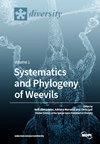Advancing Forensic Chemical Analysis to Classify Wild and Captive Turtles
IF 2.1
3区 生物学
Q2 BIODIVERSITY CONSERVATION
引用次数: 0
Abstract
The diets and environments that individuals experience can vary greatly within and among wildlife populations. These individual experiences can be compared using the chemical signatures of animal tissues, which can differentiate animals into groups, including those raised in the wild versus those held in captive facilities. In this study, we compared different combinations of four stable isotope ratios and 15 trace elements derived from the claw tips of captive wood turtles throughout the eastern U.S. and wild wood turtles (Glyptemys insculpta) from Maine to develop predictive models used to determine their origins. The purpose of this work is to develop an objective statistical tool that law enforcement can use to help prosecute poachers. We found that the chemical signatures of 14 (12 trace elements and 2 stable isotope ratios) of the 19 markers we explored were different between wild and captive wood turtles, thus reflecting the differences in their diets and environments. We found that our stable isotope ratio model had nearly perfect predictive accuracy in classifying wild wood turtles as wild and captive wood turtles as captive, whereas our trace element and combined model were 100% accurate, thus validating this statistical approach for determining the origins of confiscated wood turtles from Maine.推进法医化学分析对野生和圈养海龟的分类
个体所经历的饮食和环境可能在野生动物种群内部和种群之间有很大差异。这些个体经历可以使用动物组织的化学特征进行比较,这些特征可以将动物区分为不同的群体,包括在野外饲养的动物和在圈养设施中饲养的动物。在这项研究中,我们比较了来自美国东部圈养木龟和缅因州野生木龟(Glyptemys insculpta)爪尖的四种稳定同位素比率和15种微量元素的不同组合,以建立用于确定其起源的预测模型。这项工作的目的是开发一个客观的统计工具,执法部门可以使用它来帮助起诉偷猎者。研究发现,野生和圈养木龟在19种标记物中有14种(12种微量元素和2种稳定同位素)的化学特征存在差异,反映了其饮食和环境的差异。我们发现,我们的稳定同位素比例模型在将野生木龟分类为野生木龟和圈养木龟分类为圈养木龟方面具有近乎完美的预测准确性,而我们的微量元素和组合模型的准确率为100%,从而验证了该统计方法用于确定缅因州没收木龟的来源。
本文章由计算机程序翻译,如有差异,请以英文原文为准。
求助全文
约1分钟内获得全文
求助全文
来源期刊

Diversity-Basel
Environmental Science-Ecological Modeling
CiteScore
3.40
自引率
12.50%
发文量
925
审稿时长
11 weeks
期刊介绍:
Diversity (ISSN 1424-2818) is an international and interdisciplinary journal of science concerning diversity concept and application, diversity assessment and diversity preservation. It is focused on organismic and molecular diversity. It publishes reviews, regular research papers and short notes in the regular issues. Related news and announcements are also published. Our aim is to encourage scientists to publish their experimental and theoretical results in as much detail as possible. Therefore, there is no restriction on the length of the papers. Full experimental details must be provided so that the results can be reproduced.
 求助内容:
求助内容: 应助结果提醒方式:
应助结果提醒方式:


